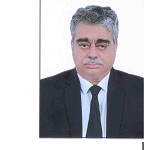Taped conversations
 P.Parthasarathi
(Querist) 06 August 2012
This query is : Resolved
P.Parthasarathi
(Querist) 06 August 2012
This query is : Resolved
Sirs,
The voice of a decoy was recorded by the raiding party before the raid was conducted and he was given the recording equipment to record his conversation with the accused. He recorded the conversation between him and thte accused. The device that taped the conversasion was never sent to any expert for confirmation of the accused's voice. Can the trial court come to the conclusion that the voice recorded in the device,produced by the prosecution as evidence to convict the accused only basing upon that?
 P.Parthasarathi
(Querist) 06 August 2012
P.Parthasarathi
(Querist) 06 August 2012
Just want to know the evidenciary value of the taped conversation between the accused and the decoy in a PC Act, 1984 trapping case, is enough evidence to convict the accused without the confirmtion of any experts like Forensic experts to confirm that the voice recorded by the decoy, as instructed by the raiding party, is evidence enough to convict.
 Sudhir Kumar, Advocate
(Expert) 06 August 2012
Sudhir Kumar, Advocate
(Expert) 06 August 2012
The validity can be proved by the evidence of tho the person :-
(i) Who recorded it.
(ii) Who relayed it to the accused for the first time and in whose presence accused failed to rebut the validity.
Expert report is a secondary evidence in case of challnage of authenticity.
 P.Parthasarathi
(Querist) 06 August 2012
P.Parthasarathi
(Querist) 06 August 2012
Kindly send me the case laws both for and against on the above subject ( evidentiary value of a taped conversation )by Hon SC and Hon HCs.
 ajay sethi
(Expert) 06 August 2012
ajay sethi
(Expert) 06 August 2012
in the case of R.M. Malkani v/s state of maharashtra AIr 1973 SC 157 , tape recorded conversation is held admissible if it is relevant, if the voice is identified and the accuracy of the tape recorded conversation is proved by eliminating the possibility of erasing the tape recorded conversation
The three provisos set out in that judgment are important. The conversation has to be relevant; this is a case for divorce in which the taped conversation is alleged to be relating to the Defendant having been told to leave the house of the Plaintiff s father as she wants a divorce. Upon that fact it becomes relevant to consider that document. The identification of the voice can be made initially by the Plaintiff herself by admitting that that was her voice in the conversation. If that is not done, the Defendant can identify the voice himself or through any other witness. If the Defendant or the Court requires, it may get the voice identified through an expert. That would not be required in every case. The forensic evidence, prayed for by the Plaintiff, would be required depending upon the facts of the case which would emerge in the cross- examination and depending upon the requirement of any identification or further identification. The accuracy of the tape-recorded conversation is of utmost importance since the document, which is a CD having tape-recorded conversation, is liable to eraser or mutilation. It would be for the Defendant to show that it was the original recording as mentioned by the Defendant himself. This could be done by producing the initial record or the original electronic record.
 ajay sethi
(Expert) 06 August 2012
ajay sethi
(Expert) 06 August 2012
In the interesting case of R.K. Anand vs. Registrar, 25 NM-8
Delhi High Court, 2009(10) Scale 164 at page 220, the original electronic materials upon which the sting operation by a journalist was based was held not needed to have been taken in the Court custody. In that case in a sting operation a particular conversation between two persons was recorded. Based upon the electronic tape recorded conversation played before the Court, contempt notices came to be issued for subverting and interfering with the course of justice in a criminal trial. In that case the copies of the original sting recordings were called for and seen by the Court. The original microchips and the magnetic tapes were allowed to be retained in the custody of the journalist of the TV channel. Upon the case that that was an incorrect and fatal procedure, the Supreme Court considered the rationale behind it thus :
If the recordings on the microchips were fake from the start or if the microchips were morphed before notice was issued to the TV
channel, those would come to the court in that condition and in that case the question whether the microchips were genuine or fake/morphed would be another issue. But once the High Court obtained their copies there was no possibility of any tampering with the microchips from that stage. Moreover, the High 26 NM-8
Court might have felt that the TV channel with its well equipped studio/laboratory would be a much better place for the handling and conservation of such electronic articles than the High Court Registry.
The Supreme Court, therefore, concluded that on the facts of the case, there was no lapse on the part of the High Court in leaving the microchips in the safe custody of the TV channel. It is, therefore, seen not to be straightjacket formula. Consequently, holding that all tape recorded conversation must be sealed without considering its intrinsic source or its custody with a party would be an exercise devoid of application of mind.
 P.Parthasarathi
(Querist) 06 August 2012
This query is : Resolved
P.Parthasarathi
(Querist) 06 August 2012
This query is : Resolved
 P.Parthasarathi
(Querist) 06 August 2012
P.Parthasarathi
(Querist) 06 August 2012
 P.Parthasarathi
(Querist) 06 August 2012
P.Parthasarathi
(Querist) 06 August 2012
